A history of the AMEP
Michael Cox, Executive General Manager, Navitas Skilled Futures, has worked in the AMEP for the past 27 years – 12 years in Victoria with AMES and the past 15 with for Navitas.
At the recent celebration of the 75th anniversary of Adult Migrant English Program (AMEP) in Australia and 25 years of delivery at NSF, Michael took guests on a journey back in time, to trace the history of the program’s development, growth and continued success.
Here is an excerpt of that speech:
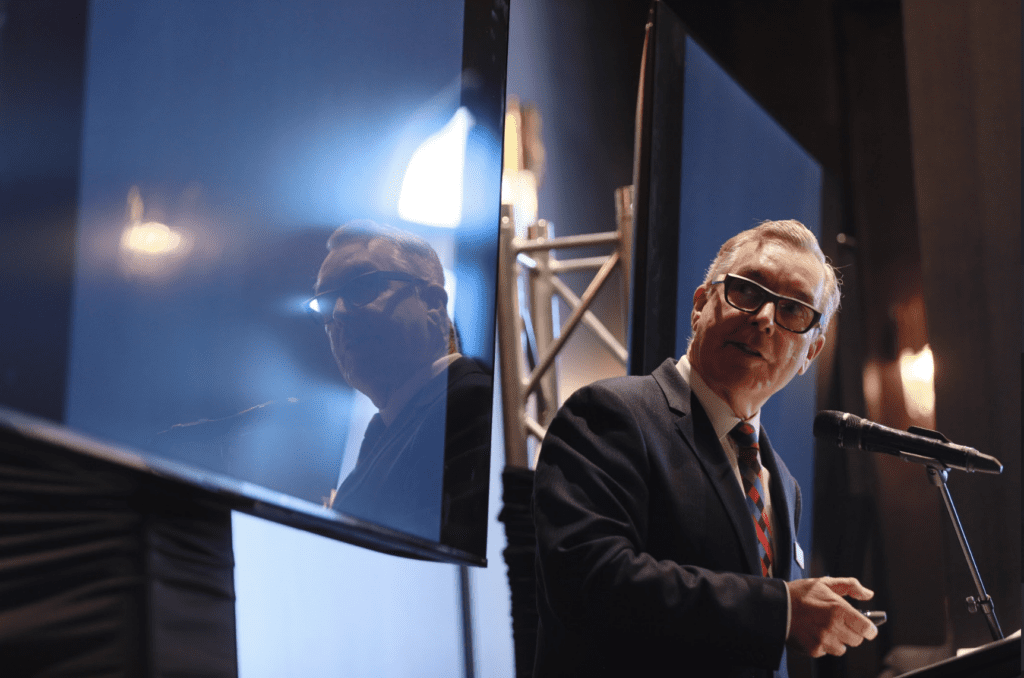
Stepping back to the 1940s and post WW2 there was unified political support to put in place a migration program to build the population, economic prosperity, and security of the nation.
In 1945, both sides of politics advocated on the need for a managed migration pathway and English language learning as a key feature to support the benefits of migration.
The Labor government’s Arthur Calwell, for example, said: “We have been too prone in the past to ostracise those of alien birth and then blame them for segregating themselves and forming foreign communities. It is we, not they, who are generally responsible for this condition of affairs.”
And the Leader of the Opposition, Robert (and later Sir Robert) Menzies and later Prime Minister also said: “I believe that upon the possibility of our securing a substantial migration to Australia during the next 30 years will depend, not only the preservation of Australia independence, but also the true prospects of advancement of social benefits in Australia.”
I think these are really powerful statements showing how both sides of government came together in terms of the importance of having a managed migration program and the importance of English in that program.
In 1947 Australia entered into an Agreement with the Preparatory Commission for International Refugee Organisation to settle an annual quota, as they put it, of 12,000 persons from the displacement camps in Europe. Twelve thousand seems to me to be a remarkable number. Here we are 75 years later. We don’t seem to have moved a long way from the 12,000, but there has been some improvement.

As people travelled to Australia by ship, five to six weeks, they could learn English on the way. And I’ve met one or two people who were part of that journey. They were the children, coming on board with their parents, learning English, watching their parents learn English, and they certainly remember the importance of learning English before they arrived in Australia.
The Director of the Commonwealth Office of Education then put in place a plan for teaching English to provide English classes, starting initially in the displacement camps, as well as on the ship voyage to Australia, on arrival, and then on placement into communities and employment.
So the foundations of the AMEP were laid, and plans commenced for its initial launch. It had begun.
1947 The first group arrived by ship in Fremantle in late November, and continued on to Bonegilla, Victoria, Australia’s first Migrant Reception Centre.

At the start of 1948, English language tuition began at Bonegilla. Here, 32 classes of approximately 25 students in each class, took part in learning every day. In the first seven months of the AMEP commencing, 4,000 people had been placed after their period in the reception centre into the community and employment.
And from that point on, the investment by government into the program continued and expanded, so that in 1948, we had the first English for Newcomers booklet published, with a further 42,000 distributed within five years.
In 1951 management of the program moved to the States; an agreement between the Commonwealth and States that would remain until 1998. And as the AMEP continued to evolve, it continued to respond to the changing needs of new arrivals and the communities over time, working with various organisations to innovate the program.
Workplace classes soon were introduced. They were developed and launched, with key employers in every State, working in collaboration with business management and with the unions to support English in the workplace.
And through that period, and even today, working in collaboration with industry and employers has remained an important part of the program, today as SLPET (Pathways to Work), an AMEP sub-program.

Technology and innovation has always played a role in the delivery of the AMEP. In 1963 the Radio and Correspondence Course was introduced. This continues today as AMEP Distance Learning, providing equity of access to people unable to attend classroom tuition. The Commonwealth continued to invest, and in 1972 “You Say the Word” the first Australian made television series, produced by the Department of Immigration. It took advantage of the technology of that time.
Innovation remains today, through the use of emerging technologies like virtual reality, and the piloting of use of AI programs in some of our classes, and I think most recently, the response by AMEP providers nationally during COVID, to move from face-to-face to online delivery in a very short period of time, we went in one week from classroom delivery across to virtual delivery full time, and the clients embraced it, and I think that was a really positive experience and we learnt a lot from it .
In 1973, the Home Tutor Scheme, now known as the Volunteer Tutor Scheme, was introduced, for people unable to attend classes, and as an entry pathway for AMEP clients. The program continues today and has expanded to support classroom and distance learning tuition and it also provides an important opportunity for the community to engage with, and support, people in their settlement.
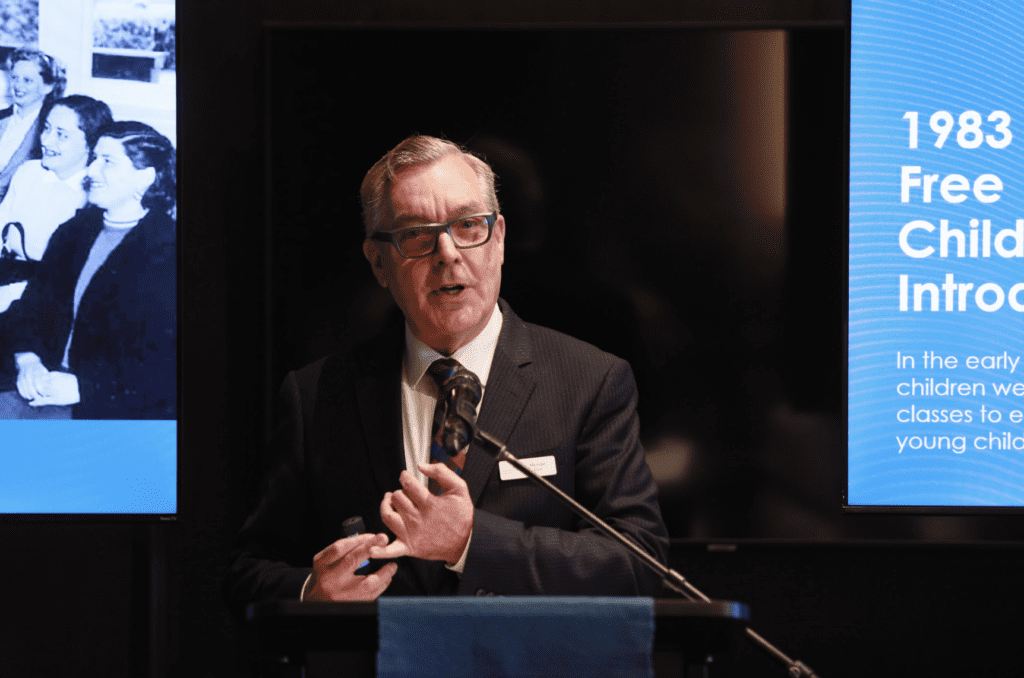
In 1983 free childcare was introduced to the AMEP, opening up an important opportunity for parents with young children to access the AMEP and with a view that the AMEP should go beyond passive child minding, to provide a positive developmental experience for the child and the special needs of non-English speaking parents and children.
KU Children’s Services has been providing AMEP childcare since the 1980s. From 1998, Navitas has partnered with KU Childcare to provide on-site and mainstream childcare to support that settlement of the children and the parents. KU offers onsite childcare, to more than 500 children each year, that supports the settlement of the parents and children.
In 1997 the Commonwealth introduced a competitive tendering process for the AMEP commencing in 1998. Navitas, then acl was the successful tender in partnership and collaboration with a range of community, not-for-profit and charitable organisations. Since that time, there’s been three tender rounds and, as with other providers, we have experienced the ups and downs of the tender process and 25 years later are proud and privileged to continue to deliver the AMEP here in Sydney South West and also the in ACT/Capital regions.
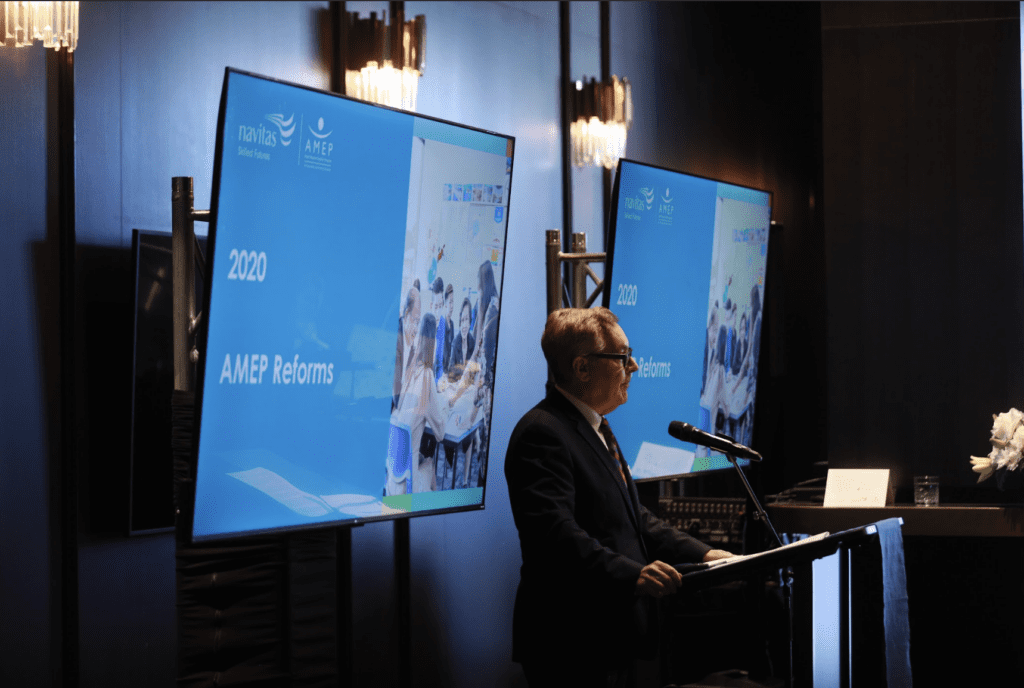
The most significant changes to the program since the 1990s when there had been a number of reviews that had taken place in terms of the program and the migration segment generally. The AMEP Reforms, introduced in April 2020, had key changes, being the removal of the 510 cap on hours, and raising the exit English level from ‘functional’ to ‘vocational’ English. The five-year eligibility time limit was removed for those people who arrived before Oct 2019 that opened up access to people who had exited the program previously that was taken up strongly by those people now eligible.
Over the past 25 years that Navitas has delivered the AMEP; innovation, collaboration and partnerships have remained central to AMEP delivery. We have focussed on providing place-based delivery based on the needs and goals of humanitarian and migrant arrivals in collaboration with a range of community stakeholders.
Some of our most recent and successful collaborations have been:
- English for Swimming with Different Strokes Swimming
- English for Sewing with SSI and Sydney Community Forum
- English for Driving with Gymea Community Aid and Information Service
- English for Courier Driving with Thrive Refugee Enterprise
- Digital Skills for Women with SSI
- YHunger Cooking Project with NSW Refugee Health Service, SSI, Western Sydney Multicultural Health Services and CuriousWorks
- Social enterprise Community Café Project with Stepping Stone in Canberra
- Fairfield Art Project ‘Our journey to Unity’ with Fairfield City Council
- Australian Wildlife Project with SBS Learn English
- Reverse Garbage Community Garden project
- Ask the Expert Series, created during COVID working in collaboration with multiple community organisations
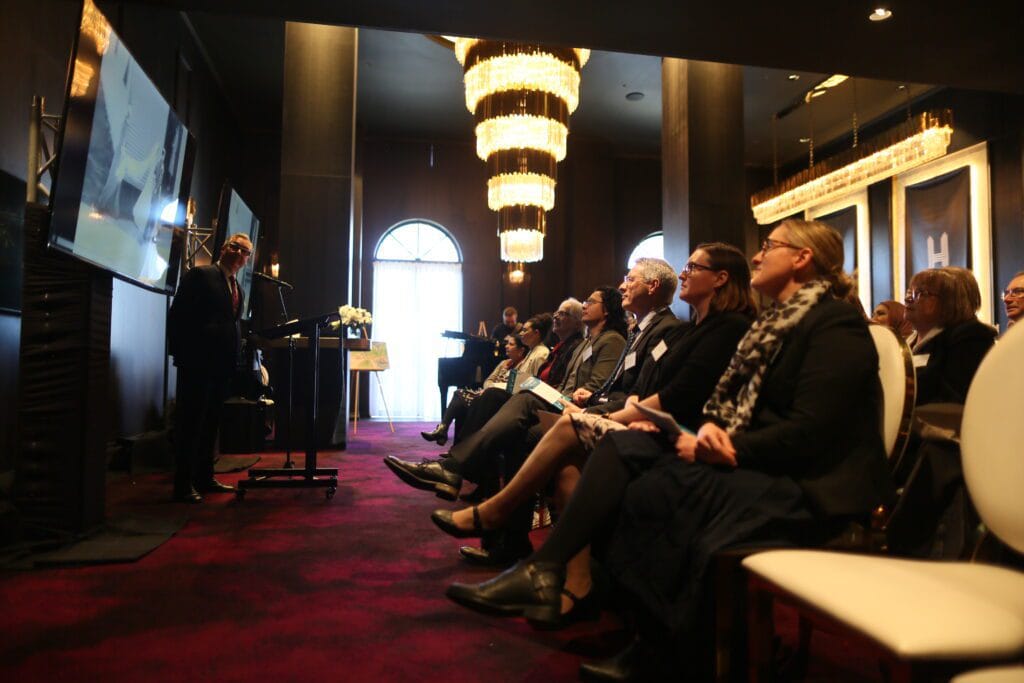
The AMEP was born in the 1940s in the spirit of collaboration to build the population, economic prosperity, and security of the nation, and today has evolved to a program that provides individual pathway support, a sense of community, specific workplace skills and more, to individuals who become valued and contributing members of our community.
Indeed, the world has changed considerably in that time and the AMEP has continued to flex, sometimes slowly and at other times with great foresight, to meet the nation’s needs, but more importantly the settlement English needs and goals of the humanitarian and migrant arrivals. We are privileged to have been a part of the settlement journeys of over 250,000 humanitarian and migrant arrivals since 1998.

